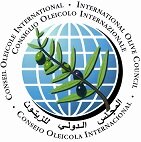Spoilage characterised by the formation of fissures just under the skin of the fruit, which looks translucent.
State of a product displaying atypical physico–chemical and/or organoleptic characteristics.
Strong acid used to neutralise excess lye or to correct the combined acidity or residual lye in brine.
Buffer capacity of brine or another solution used in table olive processing which refers to the organic acid salts present. It is determined by titration with a solution of hydrochloric acid until the pH value reaches 2.6 and is expressed as normality.
Acids present in brine, mainly acetic acid and other short-chain organic acids, determined by steam entrainment. The sample is prepared in the same way as for the determination of the chemical acidity.
See acidez química.
Acids present in brine, determined by titrating the brine with lye solution, normally using phenolphthalein as indicator.
(1) Sensation perceived in the mouth cavity caused by excess protons. (2) Primary taste produced by aqueous solutions of acid substances such as lactic acid, tartaric acid or citric acid.

